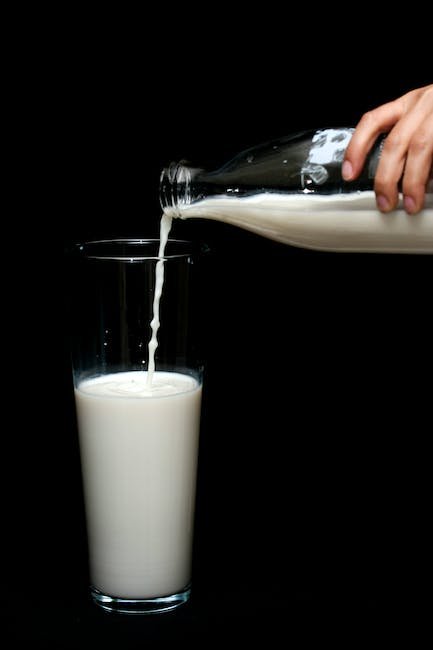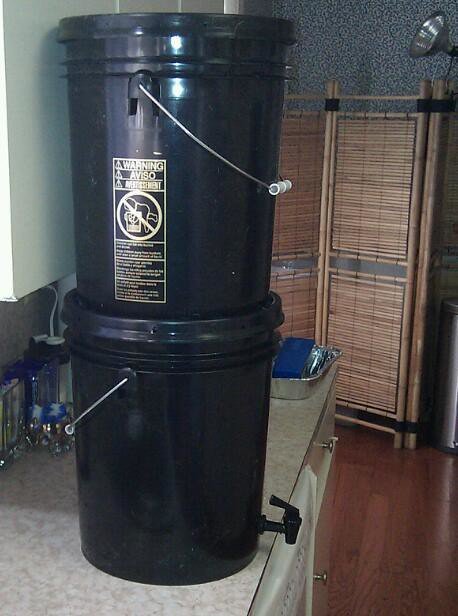Now Reading: The Dos and Don’ts of Storing Dairy Products
-
01
The Dos and Don’ts of Storing Dairy Products

The Dos and Don’ts of Storing Dairy Products
We’ve all been there – standing in front of the refrigerator, desperately trying to decipher whether that container of milk is still good or slowly transitioning into something more sinister. Storing dairy products can be a precarious balancing act, as the line between freshness and spoilage can often blur into an unsavory gray area. But fear not! In this guide, we will explore the dos and don’ts of storing dairy products to ensure that your milk stays creamy, your cheese stays squeaky, and your yogurt stays refreshingly tangy. Prepare yourself for a journey through the land of dairy storage wisdom, where we’ll debunk common myths and arm you with practical tips that will keep your fridge well-stocked with dairy delights for longer. So bid adieu to the days of curdling uncertainty and join us as we venture into the realm of preserving all things milky perfection.
Table of Contents
- Heading 1: Best Practices for Storing Dairy Products to Ensure Freshness and Quality
- Heading 2: Don’t Let Temperature Fluctuations Affect Your Dairy: The Importance of Proper Cooling
- Heading 3: Safe Handling and Storage Techniques: Dos and Don’ts for Dairy Products
- Heading 4: Understanding Expiration Dates: How to Safely Navigate Dairy Shelf Life
- Heading 5: Avoid Cross-Contamination: Essential Tips for Storing Dairy Products Separately
- Q&A
- In Retrospect

Heading 1: Best Practices for Storing Dairy Products to Ensure Freshness and Quality
Best Practices for Storing Dairy Products to Ensure Freshness and Quality
When it comes to storing dairy products, following best practices can significantly impact freshness and quality. These simple tips will help you extend the shelf life of your dairy products and maintain their delicious taste.
Keep it Cool
Dairy products are highly perishable and sensitive to temperature changes. Therefore, it is crucial to store them in a consistently cool environment. Keep your refrigerator set at or below 40°F (4°C) to prevent bacterial growth. Store dairy products on the lower and middle shelves, as the temperature remains more stable there. Avoid placing them in the refrigerator door, where the temperature fluctuates the most due to frequent opening and closing.
Wrap it Properly
To keep your dairy products fresh and maintain their quality, proper wrapping is essential. Use airtight containers or resealable bags for cheese, butter, and yogurt to prevent them from absorbing odors and drying out. Additionally, wrapping is crucial for avoiding freezer burn when storing dairy products in the freezer. Label the packages with the date and type of product to ensure you consume them within a reasonable time frame.
Resist Cross-Contamination
Cross-contamination can spoil your dairy products faster than you think. Store dairy items away from strong-smelling foods and cleaning supplies, as they can absorb odors easily. Keep milk away from raw meat and seafood in the refrigerator to prevent any potential bacteria transfer. Likewise, ensure your hands, utensils, and containers are clean when handling dairy products to maintain their freshness and ensure your health.
By implementing these best practices for storing dairy products, you can enjoy their freshness and top-notch quality for a longer time. Remember to prioritize temperature control, proper wrapping, and prevent cross-contamination. Your dairy products will thank you with their superior taste and texture!

Heading 2: Don’t Let Temperature Fluctuations Affect Your Dairy: The Importance of Proper Cooling
Don’t Let Temperature Fluctuations Affect Your Dairy: The Importance of Proper Cooling
When it comes to dairy products, maintaining the right temperature is crucial. Even the slightest fluctuations can have a detrimental impact on the quality and safety of your dairy items. That’s why proper cooling is of utmost importance for any dairy operation.
Here are some reasons why you should never compromise on maintaining the perfect temperature for your dairy:
- Preserve Freshness: Proper cooling helps preserve the freshness of your dairy products, keeping them delicious and safe for consumption. It slows down the growth of bacteria and other microorganisms that can lead to spoilage.
- Extend Shelf Life: By maintaining the ideal temperature, you can significantly extend the shelf life of your dairy items. This allows you to reduce waste and maximize profits.
- Ensure Food Safety: Cooling your dairy products prevents the growth of harmful bacteria that can cause foodborne illnesses. Proper temperature control is essential to protect the health of your consumers.
Don’t let temperature fluctuations put your dairy products at risk. Invest in reliable cooling systems and prioritize maintaining the optimal temperature for your dairy to ensure superior quality and safety. Your customers will thank you for it!

Heading 3: Safe Handling and Storage Techniques: Dos and Don’ts for Dairy Products
Safe Handling and Storage Techniques
When it comes to dairy products, proper handling and storage techniques are crucial to maintaining their quality and preventing any health risks. Here are some essential dos and don’ts to keep in mind:
- Do:
- Keep dairy products refrigerated below 40°F (4°C) to slow down bacterial growth.
- Check for the expiration date before purchasing dairy items and consume them before this date.
- Store dairy products away from strong-smelling foods to avoid flavor absorption.
- Use separate cutting boards and utensils for raw dairy products and other foods to prevent cross-contamination.
- Follow the “first in, first out” rule when storing dairy products – use older items before newer ones to maintain freshness.
- Don’t:
- Leave dairy products at room temperature for more than two hours, as this can promote bacterial growth.
- Freeze milk in its original container, as it may expand and cause packaging to break.
- Thaw dairy products at room temperature, as this can lead to spoilage and the growth of harmful bacteria.
- Save leftovers of dairy-based dishes (e.g., casseroles or soups) for more than three days, as they tend to spoil more quickly.
- Store dairy products in the refrigerator door, as the temperature can fluctuate significantly, affecting quality and shelf life.
By following these dos and don’ts, you can ensure the safe handling and storage of dairy products, keeping them fresh and free from any potential health hazards.

Heading 4: Understanding Expiration Dates: How to Safely Navigate Dairy Shelf Life
Understanding Expiration Dates: How to Safely Navigate Dairy Shelf Life
Have you ever found yourself questioning whether it’s safe to consume that carton of milk sitting in your fridge? Understanding expiration dates is crucial when it comes to maintaining food safety, particularly with dairy products. Here are some helpful tips that will help you navigate dairy shelf life and ensure you make the most of your favorite dairy products:
- Check the sell-by date: The sell-by date is the date by which the store should sell the product. It is a useful reference point but doesn’t necessarily mean the item has expired. However, it is always recommended to consume the product before the sell-by date.
- Understand the difference between “use by” and “best by”: Use-by dates indicate the last date recommended for consumption. Beyond this date, the quality and safety of the product cannot be guaranteed. Best-by dates, on the other hand, refer to the date until which the product will be at its peak quality. It may still be safe to consume after this date, but the taste and texture might deteriorate.
- Trust your senses: Expiration dates are helpful guidelines, but they are not foolproof. Before consuming dairy products, always rely on your senses. If the milk smells sour, the cheese has mold, or the yogurt appears off, it’s best to err on the side of caution and discard them.
- Proper storage is key: To maximize the shelf life of your dairy products, it is important to store them correctly. Keep them in the coldest part of your refrigerator, away from foods with strong odors that can be absorbed, and sealed tightly to prevent bacteria growth.
By understanding expiration dates, you can confidently enjoy your dairy products while ensuring utmost food safety. Remember, when in doubt, it’s better to be safe than sorry!
Heading 5: Avoid Cross-Contamination: Essential Tips for Storing Dairy Products Separately
When it comes to storing dairy products, it’s crucial to prevent cross-contamination to maintain their quality and prevent potential food-borne illnesses. Here are some essential tips to keep your dairy products safe and fresh:
- Designate separate storage areas: Make sure to assign specific shelves or compartments in your refrigerator solely for dairy items. This separation will minimize the risk of cross-contamination and help you find them easily when needed.
- Store with care: Always keep dairy products in their original packaging or airtight containers to prevent them from absorbing odors and flavors from other foods. Remember to check expiration dates regularly and discard any expired or spoiled items to maintain freshness.
- Organize smartly: Consider arranging dairy products based on their type, such as milk, cheese, and yogurt, to optimize storage efficiency. This system allows you to locate items quickly, minimizing unnecessary handling and exposure to potential contaminants.
- Prevent accidental spills: To avoid leakage or spills from milk cartons or other dairy packaging, store them on lower shelves. This helps prevent any potential contamination of other foods or surfaces in case of accidents.
By following these essential tips, you can maintain the integrity of your dairy products, ensuring their freshness and reducing the risk of cross-contamination for a healthier and more enjoyable culinary experience.
Q&A
Q: What is the best way to store dairy products?
A: To ensure freshness and extend shelf life, it is best to store dairy products in the coldest part of your refrigerator, ideally at a temperature below 40°F (4°C). Use airtight containers or resealable bags to prevent any odors from contaminating the products.
Q: Should dairy products be stored in the fridge door?
A: It is not recommended to store dairy products in the fridge door as the temperature fluctuates more in that area. Opt for storing them on the refrigerator shelves instead, where the temperature remains more consistent.
Q: Can I freeze dairy products?
A: While some dairy products can be frozen, it is important to note that freezing can alter their texture and taste. Cheese, for example, can be frozen, but it may become crumbly upon thawing. It’s best to consult specific guidelines for each type of dairy product before freezing.
Q: Is it okay to store dairy products alongside other foods?
A: Yes, you can store dairy products alongside other foods in the refrigerator, as long as they are properly sealed. However, be mindful of any strong-smelling foods, such as onions or garlic, as they can taint the flavor of dairy products.
Q: How long can dairy products be safely stored?
A: The shelf life of dairy products varies depending on the type. Generally, milk should be consumed within a week after opening, while hard cheeses can be kept for several weeks. It is crucial to regularly check for signs of spoilage, such as mold or off odors, and discard accordingly.
Q: Can I rely on the expiration date printed on dairy products?
A: While the expiration date provides a guideline, it’s essential to trust your senses when determining if a dairy product is still good to consume. Always inspect the smell, appearance, and taste of the product before consuming, even if it falls within the expiration date.
In Retrospect
In the world of dairy, where creamy delights and indulgent treats proudly reign, it’s crucial to understand the dos and don’ts of storing these precious delights. We have embarked on a journey together, exploring the art of preserving dairy products in the most delightful manner possible. Now, armed with knowledge, it’s time to bid adieu, my fellow dairy enthusiasts.
As we conclude this enlightening expedition, let us first revisit the cardinal rule – temperature is your dairy’s closest confidant. Whether it’s a block of velvety cheese, a carton of smooth milk, or a pot of luscious yogurt, the chilly embrace of the refrigerator remains their steadfast ally. Remember, dairy cherishes the cool, but abhors the cold; so, don’t succumb to the temptation of freezing your dairy treasures, for it may result in a sad loss of texture and taste.
Ah, the pivotal tale of the “Best By” date – it holds sway over the freshness and safety of dairy products like an unspoken commandment. Respect it, honor it, and embrace it. For when dairy surpasses its prime, whispers of unpleasant odors and questionable flavors may greet you, forcing you to part with your beloved dairy comrades. Heed this warning, for it shall lead to a harmonious relationship with your dairy conquests.
In the realm of dairy storage, segregation is the key to happiness. Dainty dairy delights such as butter and knowledge-thirsty cheeses yearn for a secluded existence, away from the prying eyes of their fragrant companions. Allow them their personal space, and they shall reward you with flavors that transcend this mortal coil.
Be wary, noble readers, of the perilous foe lurking in many households – the pantry. Resist the temptation to lead your dairy down this treacherous path. The pantry’s warm abyss may cloak itself in the illusion of convenience, but it is nothing more than a sly trap for spoiling your cherished dairy comrades. Together, we shall stave off this temptation and keep our dairy safe and sound, in the embrace of the refrigerator’s cool sanctuary.
And so, my fellow dairy aficionados, armed with this newfound wisdom, you have the power to elevate your dairy game to unprecedented heights. The tastiest of cheesecakes, the creamiest of cappuccinos, and the richest of sauces will grace your culinary escapades, forevermore.
As we part ways, let us go forth, spreading the gospel of proper dairy storage to all corners of the earth. With each carefully stored wedge of cheese, each meticulously chilled bottle of milk, we will preserve the magic of dairy for generations to come.
Farewell, dear reader, and may your dairy adventures be ever delicious and devoid of curdled regrets.
As an affiliate, my content may feature links to products I personally use and recommend. By taking action, like subscribing or making a purchase, you’ll be supporting my work and fueling my taco cravings at the same time. Win-win, right?
Want to read more? Check out our Affiliate Disclosure page.


